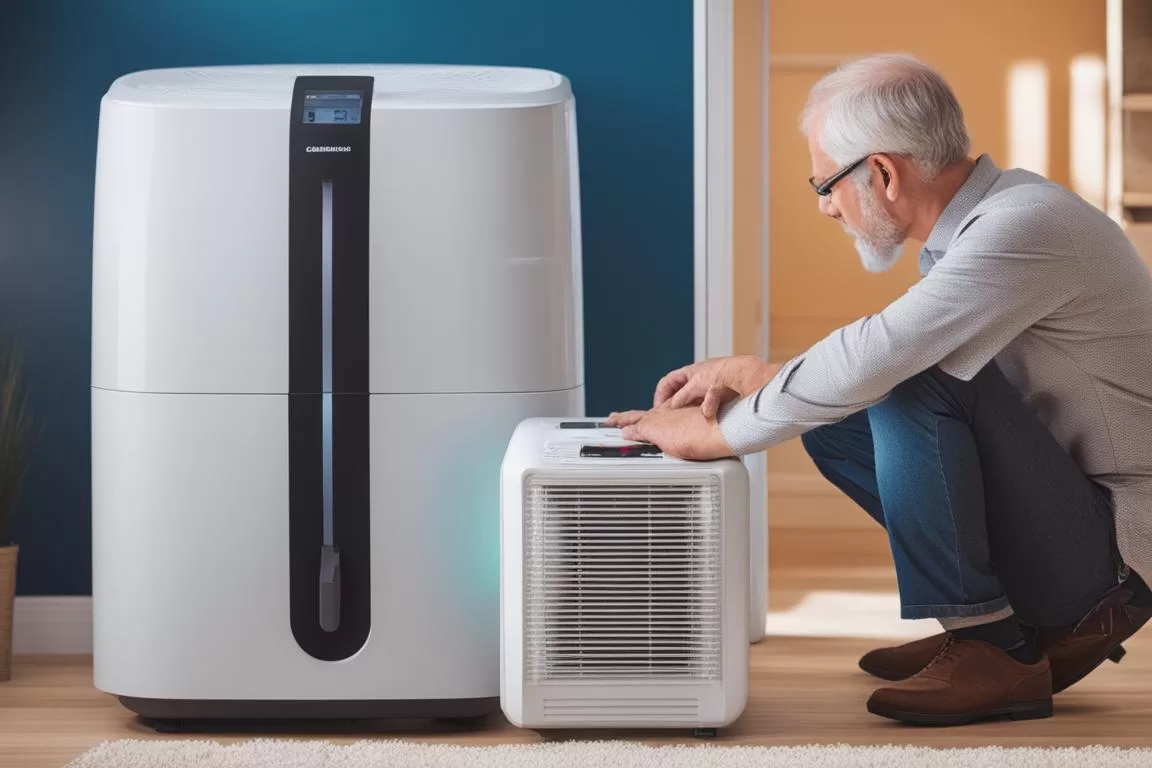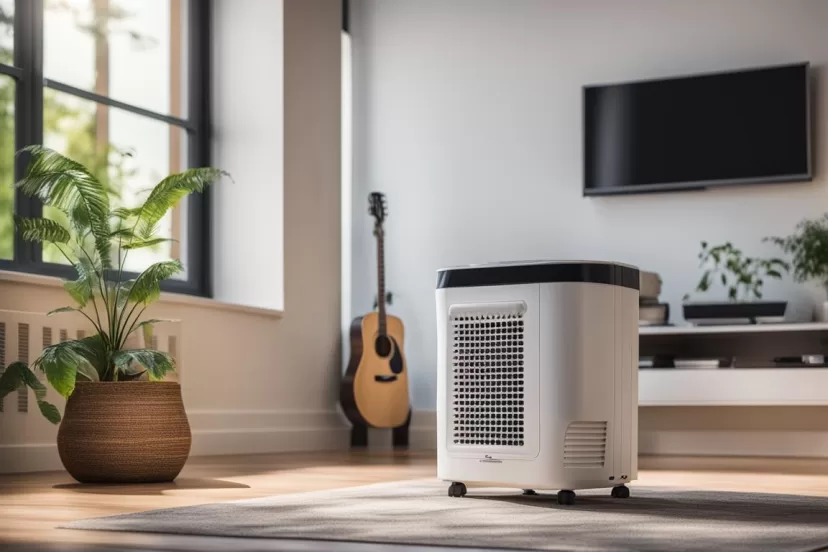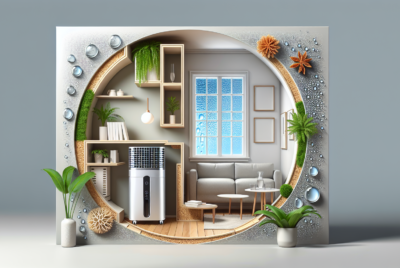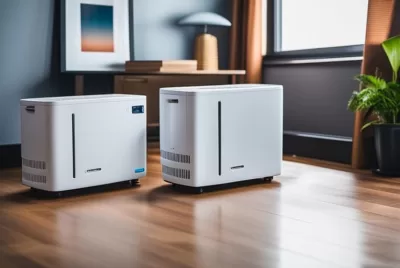The Ultimate Guide to Energy-Efficient Dehumidifiers
"We may earn a commission for purchases made using our links. Please see our disclosure to learn more."
What You’ll Learn About Energy-Efficient Dehumidifiers
Here you will learn what energy-efficient dehumidifiers are, how they work, and why they’re good for you. We’ll cover what to look for in these dehumidifiers, how they make the air in your home cleaner and help the environment, and give advice on how to save the most energy and pick the best dehumidifier for your needs.
- Understanding energy-efficient dehumidifiers: what they are, their functions, and their advantages
- Important features, their role in making indoor air healthier, and how they help the environment
- Guidance on how to save more energy and how to choose the suitable dehumidifier

Definition and Function
Energy-efficient dehumidifiers are appliances designed to remove excess moisture from the air while consuming minimal energy. They work by drawing in moist air, condensing the water vapor, and then releasing the dry air back into the room. This process helps to maintain optimal humidity levels in indoor spaces, typically between 30-50%, which is crucial for comfort and health.
Importance and Benefits
Energy-efficient dehumidifiers are machines built to take out too much moisture from the air without using a lot of energy. They pull in damp air, turn the moisture into water, and then send the dry air out into the room. This helps keep the right amount of humidity indoors, usually between 30-50%, which is important for staying comfortable and healthy.

Features of Energy-Efficient Dehumidifiers
Energy Star Certification
When picking out an energy-efficient dehumidifier, make sure it has an Energy Star label. This label means it follows tough rules for using less electricity, set by the Environmental Protection Agency (EPA). Dehumidifiers with this label use up to 30% less energy than ones without it, so they’re better for both the planet and your electricity bill.
Key Features to Look For
When looking at energy-efficient dehumidifiers, check out some cool features like being able to change the humidity level, an auto-defrost mode for cold places, timers you can set, and sensors that track humidity smartly. These things not only help save energy but also make the dehumidifier easier and more personalized for you to use.
Benefits of Energy-Efficient Dehumidifiers

Improved Indoor Air Quality
Energy-efficient dehumidifiers keep the humidity just right, which makes the air inside your home cleaner. They lower things like allergens, dust mites, and mold spores, making the air healthier to breathe, especially for people with allergies or asthma.
Mold and Mildew Prevention
Too much moisture can cause mold and mildew, which can harm both your house and health. Energy-efficient dehumidifiers stop mold and mildew from growing, protecting your home’s structure and your health.
Energy Cost Savings
These dehumidifiers use less energy, which means you save money on electricity bills. They’re good at removing moisture without using a lot of power, keeping your home comfortable and your bills low.
Maximizing Energy Savings: Best Practices
To save the most energy with a dehumidifier, put it in really damp places like basements or laundry rooms. Sealing leaks and insulating your home well also helps the dehumidifier work better and save more energy.
Maintenance Tips
Taking care of your dehumidifier is key for it to work efficiently. This means cleaning or changing filters, making sure it drains properly, and keeping it dust-free. Regular upkeep not only saves energy but also makes the dehumidifier last longer.

Choosing the Right Dehumidifier: What to Think About
When picking out an energy-efficient dehumidifier, think about how big the area is where you’ll use it, how well it can control humidity, and how energy-efficient it is. Also consider how loud it is, if it’s easy to move around, and any extra features that meet your needs.
Tips for Energy Efficiency
Choose a dehumidifier that’s just the right size for your space to prevent it from working too hard. Look for ones where you can adjust things like the fan speed and humidity level, which helps you use less energy depending on your room’s conditions.
Sustainable Use of Dehumidifiers: Helping the Environment
Using energy-efficient dehumidifiers helps the environment because they use less electricity. This fits with a sustainable lifestyle, reducing the energy footprint of your home.

Environmental Benefits: More Than Just Energy Savings
Energy-efficient dehumidifiers do more than just save energy. They also help the environment by stopping mold damage. This means less throwing away of building materials and furniture. By keeping the air healthy inside, they support a lifestyle that’s good for the planet and reduces the need to replace things often.
Conclusion: Why They’re Key for Your Home
Energy-efficient dehumidifiers are super important for a comfortable, healthy, and energy-smart home. They control moisture, prevent mold, make the air better, and save you money on energy in the long run. Choosing one with an Energy Star label and taking good care of it means you’ll use less energy. Picking the right one and using it the right way helps both you and the environment.
FAQs
1. How do they save energy?
They use cool tech like smart sensors and energy-saving compressors to pull moisture from the air without using much electricity.
2. Do they work in any size room?
Yep, they come in different sizes. Just pick one that fits the size of your room and so make sure you have great energy efficiency.
3. Can they work in cold places?
Many can, thanks to an auto-defrost feature that lets them work well in cool areas like basements and continue to give reduced energy use.
4. How often should I clean the filter?
About every 2-4 weeks, depending on the air in your place.
5. Do they help reduce carbon emissions?
Yes, by using less electricity, they cut down on carbon emissions and provide deliver energy efficiency, which is good for the planet.




